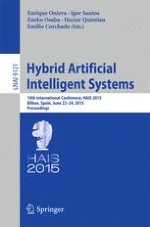2015 | OriginalPaper | Buchkapitel
Detecting Anomalies in Embedded Computing Systems via a Novel HMM-Based Machine Learning Approach
verfasst von : Alfredo Cuzzocrea, Eric Medvet, Enzo Mumolo, Riccardo Cecolin
Erschienen in: Hybrid Artificial Intelligent Systems
Aktivieren Sie unsere intelligente Suche, um passende Fachinhalte oder Patente zu finden.
Wählen Sie Textabschnitte aus um mit Künstlicher Intelligenz passenden Patente zu finden. powered by
Markieren Sie Textabschnitte, um KI-gestützt weitere passende Inhalte zu finden. powered by
